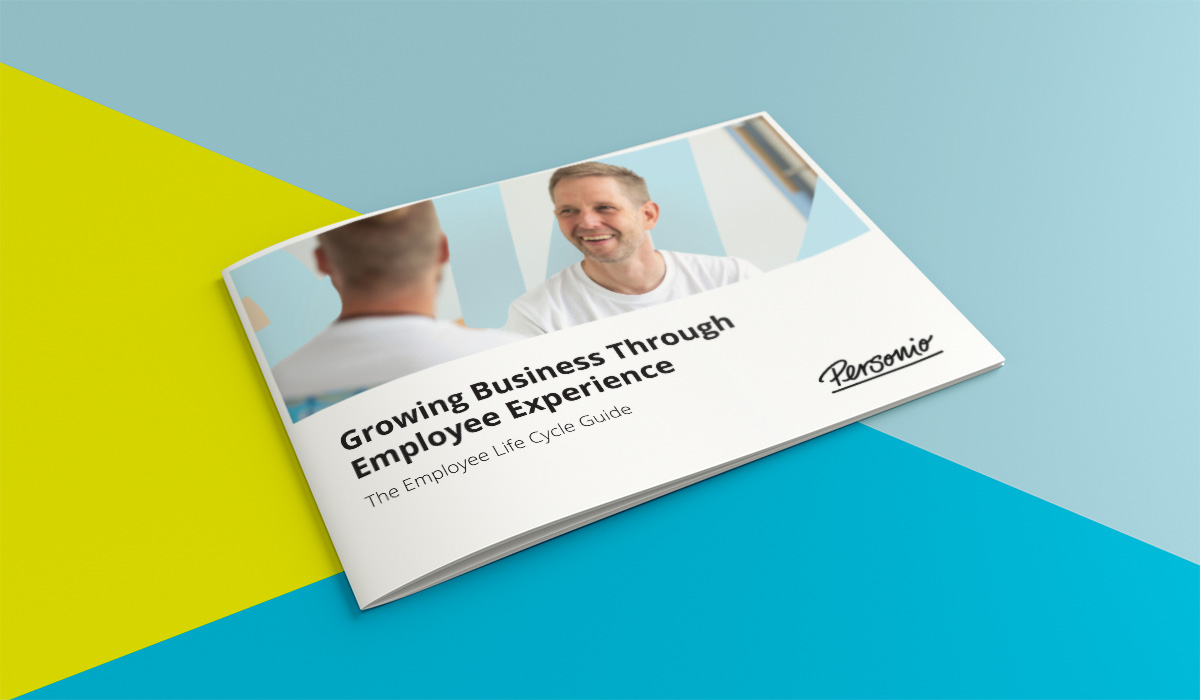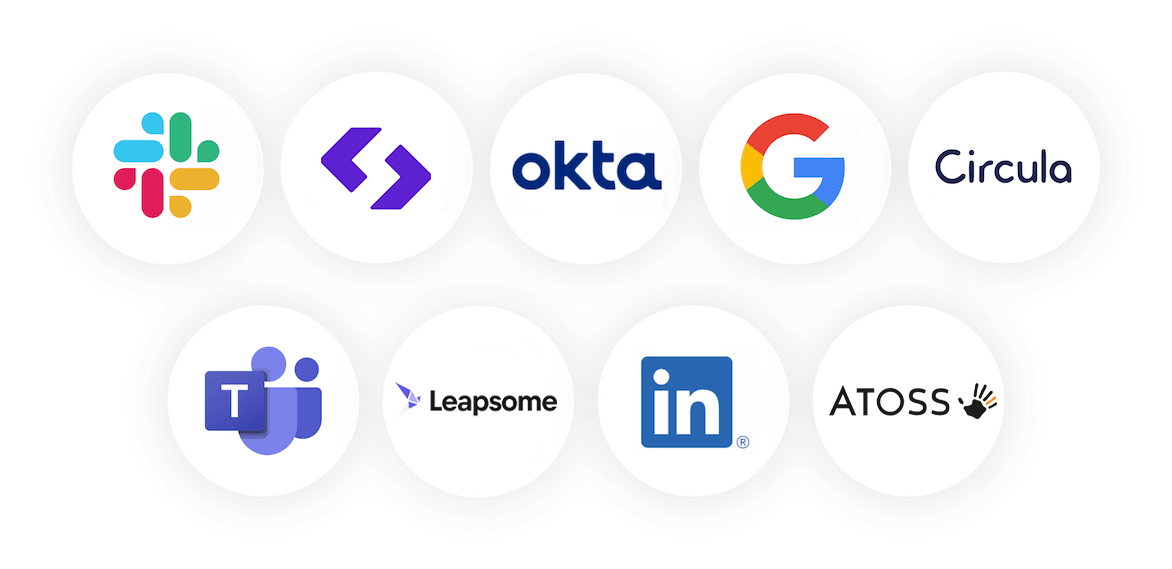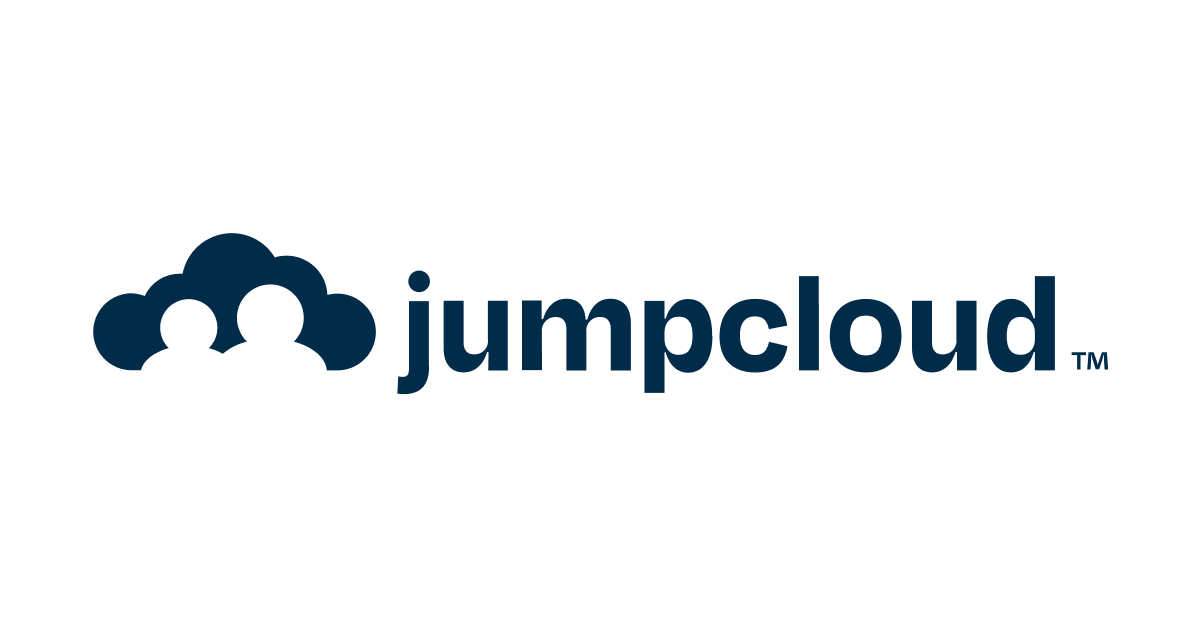9. March 2023
6 Smart Tips to Deliver World-Class Onboarding & Offboarding

As the experts responsible for finding and keeping the right people and enabling employees to maximise productivity with technology, IT and HR build the foundations needed for any company to succeed.
And, onboarding is arguably the most important process they share. When done wrong, it can have far-reaching consequences – turnover can be as high as 50% in the first 18 months. And with only 12% strongly agreeing that their organisation does a great job of it, there certainly exists room for improvement.
We spoke to IT and HR professionals from both Personio and JumpCloud, who develop and support the leading open directory platform, to learn more. Here’s what they had to say about building seamless onboarding from (before) day one.
First, check out our most downloaded checklist for onboarding your employees will love.
1. Balance Your Pre-Onboarding Plan
Spoiler alert: great onboarding starts long before your new hires log in on day one.
“Start engagement with a pre-onboarding program, especially in countries with longer notice periods”, shares Angelina Gentili, Personio’s Head of People Operations. She urges hiring teams to keep a regular flow of communication pre-start and to create and attend networking opportunities for new hires.
It’s also a good idea to ‘walk the walk’ before they start: “Follow the onboarding program your HR team has created for the new hire, gather and share feedback to help them be even more successful.” Is anything in their materials out of date or not relevant anymore?
However, no matter how quickly you’d like to onboard new hires, Angelina recommends to respect your new hires’ timelines and “not to share job material until their first day of employment.” The focus here should be on familiarity, not functionality: you don’t want them doing unpaid work, but simply getting to connect with their new team and culture.
2. Create Clear Expectations for Everyone
Once a candidate starts, communication is vital, says Sandra Carmichael, EMEA HR Director of JumpCloud: “It sounds simple but it’s quite difficult to get right as we are all tied up in doing our day job.”
New hires need to understand their next steps, emails to look out for and who they are able to contact if they need help. “All too often, internally we know our process inside out but the candidate is none the wiser about whether they’re on track.”
Every onboarding process should include an enquiry to the manager to determine which types of IT resources they’ll need access to, says Rickie Neville of JumpCloud.
A major danger here is taking a ‘one-size-fits-all’ approach: “As an IT admin, what concerns me is overprovisioning when onboarding – giving a user access to more than what they require for a role. Automation using persona types avoids human error here.”
3. Get Them in the Driver’s Seat ASAP
New starters are usually chomping at the bit to get stuck in, so capitalise on that. “I always suggest a 30/60/90 day plan to the hiring manager and to be sure they have the tools and guidance to do their job well,” says Sandra. She explains: “Usually the best way to learn the ropes in any company is to start doing the actual job as soon as possible with the best support mechanisms in place”. This makes people feel empowered.
To enable this, ensure their pre-hire onboarding email is sent with as much lead time as possible to allow the IT department to enable ‘day one productivity’, says Rickie: “If the organisation allows user-based device choice this should be part of the email. For best results, “create a comprehensive checklist that covers everything that this new employee needs access to – this should be handled by a colleague with a similar role that can verify access and ability needed for the new hire to be successful and productive.”
Streamline your employee life cycle at every step

Take your organisation to new heights with these employee-centric best practices.
Get the guide4. Don’t Forget First Days Can Be Nerve-Racking
Sometimes remembering experiences you didn’t enjoy helps you understand what needs to be prioritised, says Sandra.
“I’ll never forget starting a new job and my manager sending me an email the Friday before with the floor plan and where I was to be on my first day marked with a big red X.” After walking around the building for 20 minutes and stressing about being late, she found it only to see her boss sitting in her office tending to her emails. “Need I say more?”
Simple touches can make a real difference here, says Sandra: “People want to feel valued from the outset – if you’re in an office, get someone to meet them at reception on their first day and show them where the bathrooms are.” Also ensure they have a ‘buddy’ who they feel they are able to ask questions, without feeling silly for doing so.
5. Respect is Everything When Offboarding
It’s absolutely essential that respect is maintained not only between IT and HR teams and the employer and the departing employee during the onboarding process. But unfortunately, not many companies get offboarding right, says Sandra.
“There is a huge perception that it’s not important.” But it should be pleasant: “You will likely be in that position at some point. Treat the person leaving in a way you would like to be treated.” If employees have a negative experience at the beginning, they can tend to ‘bank’ examples of what went wrong. These can result in negative reviews making it difficult to attract talent, and at worse, a court case.
Speaking of legal implications, if there is a delay between HR being notified of an employee’s departure and IT becoming aware, this can lead to security and legal risks, says Rickie.
“If the employee still has access to systems and confidential information, it can result in data breaches or theft.” That is why automation is key. “If HR systems feed directly into identity management systems, we can be sure that when an employee is offboarded by HR, their application and device access is shut off, mitigating potential security risks.”
6. Let Technology Do the Heavy Lifting
Finally, make the most of online tools such as learning management systems to provide training and resources to new employees, says Rickie. You can also use a project management tool to assign tasks and track progress and identity management in conjunction with automations to ensure users have the right apps and access. These tools makes onboarding much easier to both standardise for HR and IT teams.
You should also use technology to simplify your to-do list as you prepare for your new hires’ first day: For this, a centralised platform that allows user provisioning automation can help you access 1) an email provider 2) SaaS applications and 3) WiFi and VPN solutions.
Lastly, pool ideas to make it fun: Rickie explains: “Great onboarding should be interactive and use a variety of formats such as videos, quizzes, games and discussions via a learning management system. HR and IT should collaborate to ensure this is engaging.”
Looking for an even smarter way to connect your IT and HR processes? Check out our integration with JumpCloud, the comprehensive open directory platform for identity, access and device management that provides a full view of your environment from a single pane of glass.

Hannah Popham
Hannah is a Senior Content Marketing Manager at Personio. She loves writing about the ever-changing ways that we work and how they intersect with our lives outside work.

